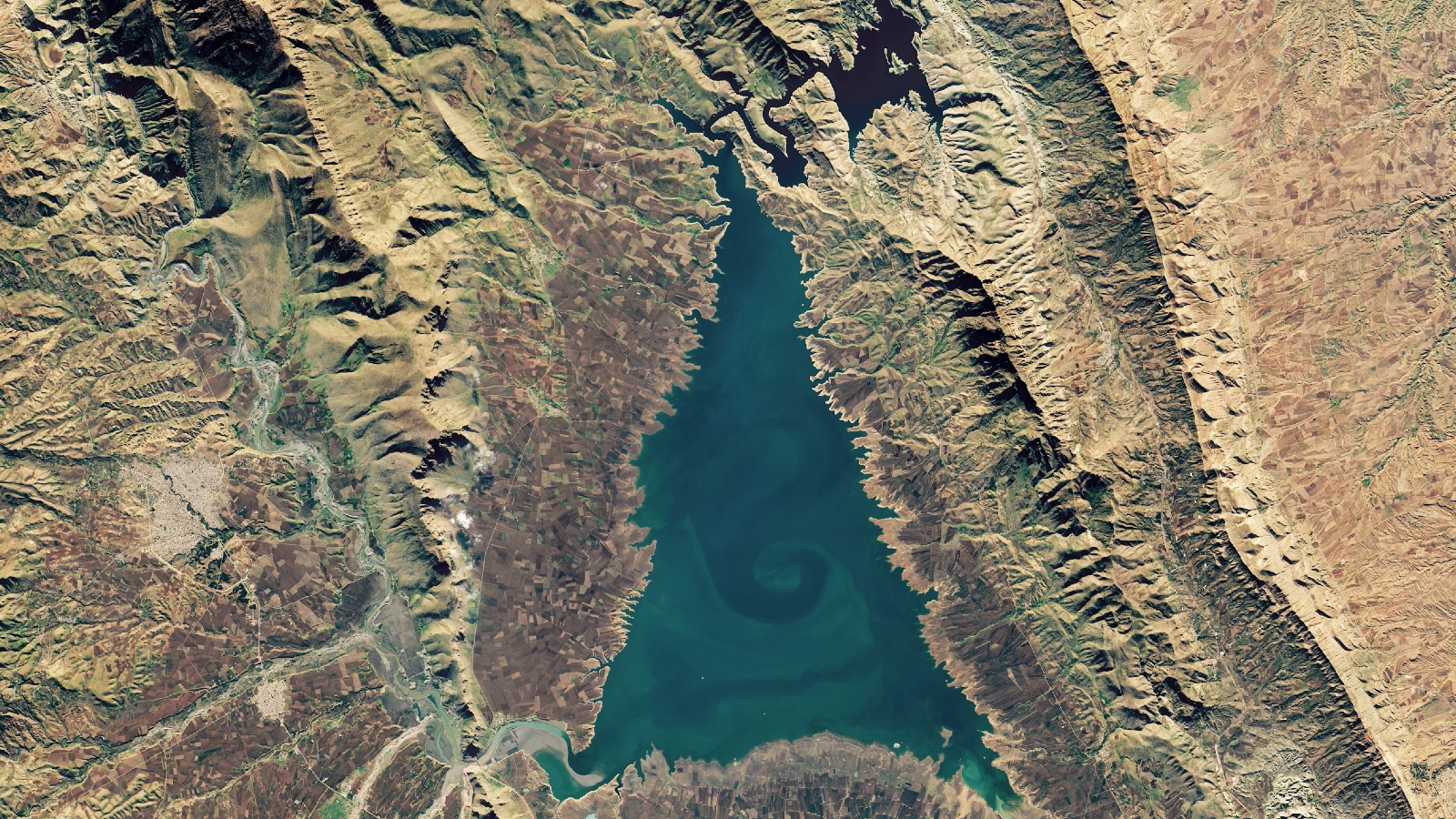
Where is it? Lake Dukan, Iraq [36.10370026, 44.918436632]
What's in the photo? A giant human-made lake that looks like a festively decorated "Christmas tree"
Who took the photo? European astronaut Alex Gerst on board the ISS
When was it taken? Dec. 3, 2018
This 2018 astronaut photo shows off an unusually triangular "Christmas tree" lake in Iraq that appears to be dressed up for the holidays with a mix of both natural, artificial and illusory decorations.
Lake Dukan is a human-made reservoir that was fully formed in 1959 after the completion of the Dukan Dam — a huge hydroelectric dam near the city of Ranya in Iraq's Kurdistan region. The large tree-shaped triangle stretches up to 6 miles (10 kilometers) across from its "base" to its "top"; and a smaller gangly offshoot appears to hang off the tree's top like a wonky star, where the dam drains into the Little Zab River, according to NASA's Earth Observatory.
While the lake is not known locally for its festive shape, it is a sought-after landmark for astronauts on board the International Space Station during the holidays. "Looking down from space, features on Earth appear in many familiar shapes — and Lake Dukan just happens to look like a Christmas tree," NASA representatives wrote.
Festive decorations
In the astronaut photo (above), two additional festive decorations are on display. First, the tree is covered with tinsel-like green swirls that are the result of algae blooming across the lake's surface, triggered by warm weather and agricultural run-off. Second, around a dozen black dots are littered across the tree like ornaments.
However, unlike the blooming tinsel, the shadowy ornaments are not there. Instead, the spots are artifacts in the photo caused by a phenomenon called lens flare in the astronaut's camera, in which light gets scattered by slight imperfections in the camera's lens, according to Earth Observatory.
Related: See all the best images of Earth from space

The lake has turned into a popular tourist destination in recent decades thanks to its artificial beaches and excellent fishing. However, some experts worry that these activities threaten a diverse ecosystem that has emerged at the lake since it was created.
The reservoir is home to around 180 species of mainly birds and fish, as well as some rarer species including Eurasian otters (Lutra lutra) and striped hyenas (Hyaena hyaena), which are both threatened with extinction, according to BirdLife International (BLI). However, the lake has never been properly assessed and is under "very high" pressure from tourist activities, BLI representatives wrote.
Dukan Lake is also surrounded by several important archeological sites, including the paleolithic Hazar Merd Cave, or "cave of a thousand men," that dates back to around 50,000 years ago. The area also hosts several ancient citadels and a group of 4,000-year-old sculptures, known as the Ga'war Strait Sculptures, according to the Kurdistan Tourism Board. Most of these places are located in the nearby Zagros Mountains.







